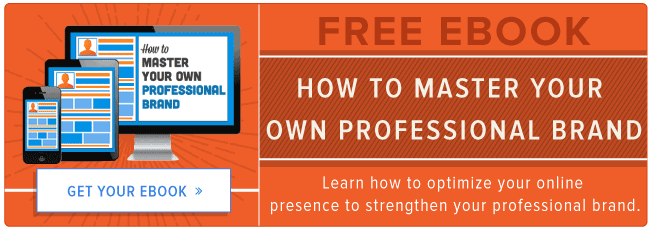 When you sign into LinkedIn every morning, what do you see? You see that flag icon in the upper right-hand corner of the site (unless you’re on mobile, in which case it’s on the left-hand side), and it’s red.
When you sign into LinkedIn every morning, what do you see? You see that flag icon in the upper right-hand corner of the site (unless you’re on mobile, in which case it’s on the left-hand side), and it’s red.
But when you click through, the notifications aren’t about you. Sure enough, another one of your connections has published a new piece of content, has been featured in the media, or is speaking at a conference.
Then you feel it — that sense of paranoia that you’re so far behind with your own personal brand that you don’t even know where to start. You have so many questions about what to do and how to do it, all the while your peers seem to be easily “enhancing” their own personal brand. Your heart speeds up, you’re overcome with anxiety … and then your day starts and you forget all about your personal brand until the next morning.
This cyclical mindset is one that haunts more people in our industry than are willing to admit, and it’s one that I personally struggle with everyday. Luckily, there are a few steps we can take to building our personal brand (and hopefully quelling that anxiety). Check out the most common mistakes people make with their personal brand, and learn how to fix them.
1) You haven’t asked yourself what you want from your personal brand.
Why do you want to improve your personal brand? For your current company, for yourself, for your clients? Also, how do you want to improve your brand? Is it through blogging, speaking, media involvement?
Asking questions like these helps you identify the “why” first, the “how” second, and then plan your attack. If you don’t focus your goals, you’ll be left trying to do everything, which will usually leave you in a paralytic state.
2) You’re not doing enough.
If improving your personal brand is truly important to you, then ask yourself, are you doing 100% of what you could be doing to improve? Have you allocated specific time this week to solely focus on your brand? The answer is most likely no. Don’t dip your toe in the water on enhancing your brand — you need to commit to doing it at least several hours a week to see results.
3) You’re spreading yourself too thin.
Yep, that’s right: You also might be doing too much. How can I be doing too much if I’m not doing enough, you might be asking?
What I’ve seen is that people take on more than they can complete at a high quality level of output. Don’t spread yourself too thin, whether it’s on topic(s) of expertise or number of outputs per month. Identify where you need to be and why, and hone in on that specific target.
Remember to ask yourself these three things before you put anything in the public spotlight: 1) When people engage with your content, will they know something they didn’t before? 2) Will they recommend it to others? 3) Can they use it to positively impact themselves or others? If the answer to any of these is no, keep working.
4) You’re inconsistent.
We’ve all been here, you produce a few blog posts one month and none the other. You attend events in the winter but are a ghost in the summer. Establish what’s reasonable for you, and find a way stay top of mind with your peers and industry on a consistent basis. After all, people forget quickly. Something you did last quarter has probably been forgotten by most.
5) You’re not reaching out to others to collaborate.
Working with others is often one of the most enjoyable ways to improve your personal brand. We do it all the time at our own company. For instance, we worked with LinkedIn and HubSpot to produce our latest ebook, and there’s room to do the same with your personal brand. Whether you’re publishing content or hosting an event, think about people or partners you might be able to work with to increase the quality and visibility of your project.
6) You’re just copying others.
Best practices (even those preached in this article) are simply suggestions based on what has worked well historically. If you follow best practices — and only best practices — you won’t be doing much to differentiate yourself. For those of you looking to really stand out from your peers, you’ll need to carve your own path. Stay updated and aware of what your peers are doing, but focus on developing your audience with unique content — even if it’s “different” than what the majority is doing.
7) You’re intimidated by others.
Even if you’re just getting started building your brand, there’s no reason to be intimated by others’ success. If you’ve taken the time to thoroughly identify why you want to improve your personal brand, and you’ve established concise goals pertaining to who, what, when, where and how, then you’ll be in better shape than most.
Instead of focusing on what the competition is doing, let your work speak for itself. Ultimately it’s your output (whether that’s content, networking, events, etc.) that will establish your personal brand — so focus your efforts on executing those really well. With everything you do, be laser focused on quality, not volume of output.
![]()


